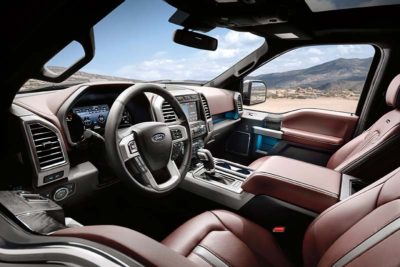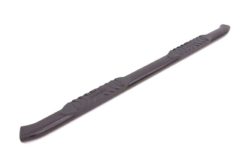The Future of All Trucks: Emerging Truck Technologies


During the past century, trucks have changed continuously; but their prime focus has remained the same. Haul people, gear and payload, and tow. It’s what a truck does. However, today, new technologies are being applied to these trucks on a level that surpasses the usual increases in model horsepower and weight limits, and these new features are adding a great deal to vehicles that are already at the heart of your business.
What follows are some of the new and emerging technologies that are currently offered across the whole of the pickup market. Some are very new, some have been in development for a while, but each points to the future of all trucks. Call them the new electronic driver assistance features.
Cameras

Adaptive Cruise Control
GM, Ford and Ram all feature adaptive cruise control technology now – cruise control that accelerates, slows with the pace of traffic and keeps a set following distance. Now, this is exactly what these systems have been doing on cars for a few years now, but with trucks, the wild card has always been weight. Being able to haul up to 30,000 lb with many new HD pickups exposed a scary flaw in previous systems. Prior to the electronic linking of the radar, brakes, trailer brakes, exhaust brake and transmission gearing cruise control on trucks were prone to over-speeding the set speed on long downhill grades. Today, though, the new driver-assist computer automatically holds any preset speed no matter the weight or the severity of the grade.
Here, Ford has been the leader, with names like Ford Work Solutions and Tool Link from Dewalt. Using RFID technology, you can tag your tools, and then the system will let you know what’s in your truck and what isn’t. Check it at the end of the workday to see that all the gear you used at the job site is back on board. RFID tags are attached to any tools or equipment you want to track. The system identifies each tag, and you can type in the name of the item. Once the inventory is complete, the system can track the items you tagged whenever they’re in the truck, and alert you if they’re missing. Tool Link is a useful piece of technology.
Wi-Fi hotspot on board
Who doesn’t carry a cell phone? However, some stuff just works better on a laptop, right? And while you can tether it to your phone, how fast is it? What does the data cost? Well, GM made an obvious technology leap when it decided to use the OnStar network that it had spent a decade setting up to also carry a 4G LTE Wi-Fi hookup for its vehicles. This system works while moving or while stationary, and generally will extend to at least a 50-foot radius around the truck, so you can work outside as well. You can link your phone to it too. Also, GM is offering an unlimited data package for its OnStar 4G LTE Wi-Fi hotspot across its entire lineup.

Ford has also invested in fleet monitoring technology, but there are aftermarket systems out there and other manufacturers will no doubt follow suit soon. For starters, Ford’s Crew Chief device installed on your trucks can tell you where each truck is 24/7. You can access this information on the in-dash computer in your truck or on any computer with web access. With Crew Chief, you can see which truck is closest to the job you need done as well as providing information on the efficiency and productivity of your fleet. However, another aspect of this kind of electronic monitoring is just as important – diagnostic and maintenance reports on each truck.
These are just a few of the new electronic driver assistance features that are currently available in the marketplace. Looking ahead though – connectivity and on-board computers will certainly increase the number of assistance features available to truck customers. As an example of what’s possible, a quick look at the heavy truck industry gives a hint as to what’s next. Volvo Trucks of Europe has just developed a safety system that utilizes cameras and radar technology to monitor the road and activate an automatic emergency braking system in case the driver is too slow or doesn’t react – and that’s in a full-size tractor-trailer.























